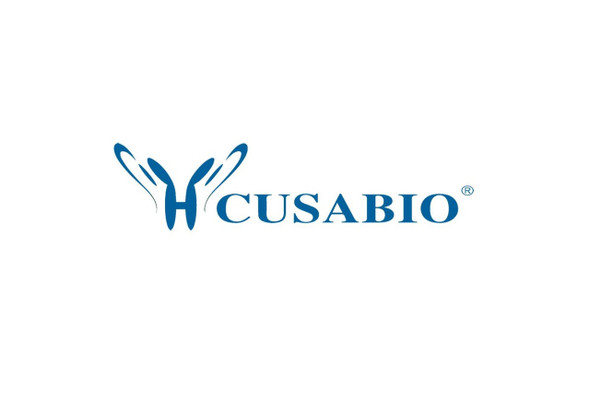Cusabio Human Recombinants
Recombinant Human Growth/differentiation factor 9 (GDF9) | CSB-EP009352HU
- SKU:
- CSB-EP009352HU
- Availability:
- 3 - 7 Working Days
Description
Recombinant Human Growth/differentiation factor 9 (GDF9) | CSB-EP009352HU | Cusabio
Alternative Name(s): GDF9Growth/differentiation factor 9; GDF-9
Gene Names: GDF9
Research Areas: Cardiovascular
Organism: Homo sapiens (Human)
AA Sequence: GQETVSSELKKPLGPASFNLSEYFRQFLLPQNECELHDFRLSFSQLKWDNWIVAPHRYNPRYCKGDCPRAVGHRYGSPVHTMVQNIIYEKLDSSVPRPSCVPAKYSPLSVLTIEPDGSIAYKEYEDMIATKCTCR
Source: E.coli
Tag Info: N-terminal GST-tagged
Expression Region: 320-454aa
Sequence Info: Full Length of Mature Protein
MW: 42.5 kDa
Purity: Greater than 90% as determined by SDS-PAGE.
Relevance: Required for ovarian folliculogenesis. Promotes primordial follicle development. Stimulates granulosa cell proliferation. Promotes cell transition from G0/G1 to S and G2/M phases, through an increase of CCND1 and CCNE1 expression, and RB1 phosphorylation. It regulates STAR expression and cAMP-dependent progesterone release in granulosa and thecal cells. Attenuates the suppressive effects of activin A on STAR expression and progesterone production by increasing the expression of inhibin B. It suppresses FST and FSTL3 production in granulosa-lutein cells.
Reference: Mutational screening of the coding region of growth differentiation factor 9 gene in Indian women with ovarian failure.Dixit H., Rao L.K., Padmalatha V., Kanakavalli M., Deenadayal M., Gupta N., Chakravarty B., Singh L.Menopause 12:749-754(2005)
Storage: The shelf life is related to many factors, storage state, buffer ingredients, storage temperature and the stability of the protein itself. Generally, the shelf life of liquid form is 6 months at -20?/-80?. The shelf life of lyophilized form is 12 months at -20?/-80?.
Notes: Repeated freezing and thawing is not recommended. Store working aliquots at 4? for up to one week.
Function: Required for ovarian folliculogenesis. Promotes primordial follicle development. Stimulates granulosa cell proliferation. Promotes cell transition from G0/G1 to S and G2/M phases, through an increase of CCND1 and CCNE1 expression, and RB1 phosphorylation. It regulates STAR expression and cAMP-dependent progesterone release in granulosa and thecal cells. Attenuates the suppressive effects of activin A on STAR expression and progesterone production by increasing the expression of inhibin B. It suppresses FST and FSTL3 production in granulosa-lutein cells.
Involvement in disease: Altered GDF9 function may be involved in ovarian disorders. Rare variants in GDF9 have been found in patients with premature ovarian failure and mothers of dizygotic twins.
Subcellular Location: Secreted
Protein Families: TGF-beta family
Tissue Specificity: Expressed in ovarian granulosa cells. Present in oocytes of primary follicles (at protein level).
Paythway:
Form: Liquid or Lyophilized powder
Buffer: If the delivery form is liquid, the default storage buffer is Tris/PBS-based buffer, 5%-50% glycerol. If the delivery form is lyophilized powder, the buffer before lyophilization is Tris/PBS-based buffer, 6% Trehalose, pH 8.0.
Reconstitution: We recommend that this vial be briefly centrifuged prior to opening to bring the contents to the bottom. Please reconstitute protein in deionized sterile water to a concentration of 0.1-1.0 mg/mL.We recommend to add 5-50% of glycerol (final concentration) and aliquot for long-term storage at -20?/-80?. Our default final concentration of glycerol is 50%. Customers could use it as reference.
Uniprot ID: O60383
HGNC Database Link: HGNC
UniGene Database Link: UniGene
KEGG Database Link: KEGG
STRING Database Link: STRING
OMIM Database Link: OMIM









